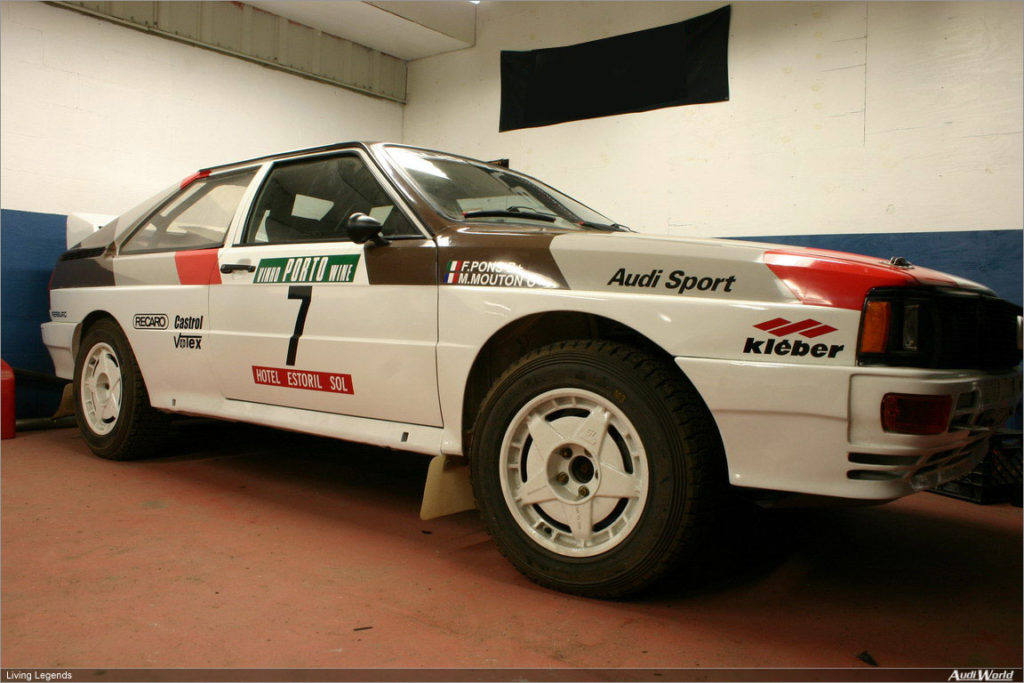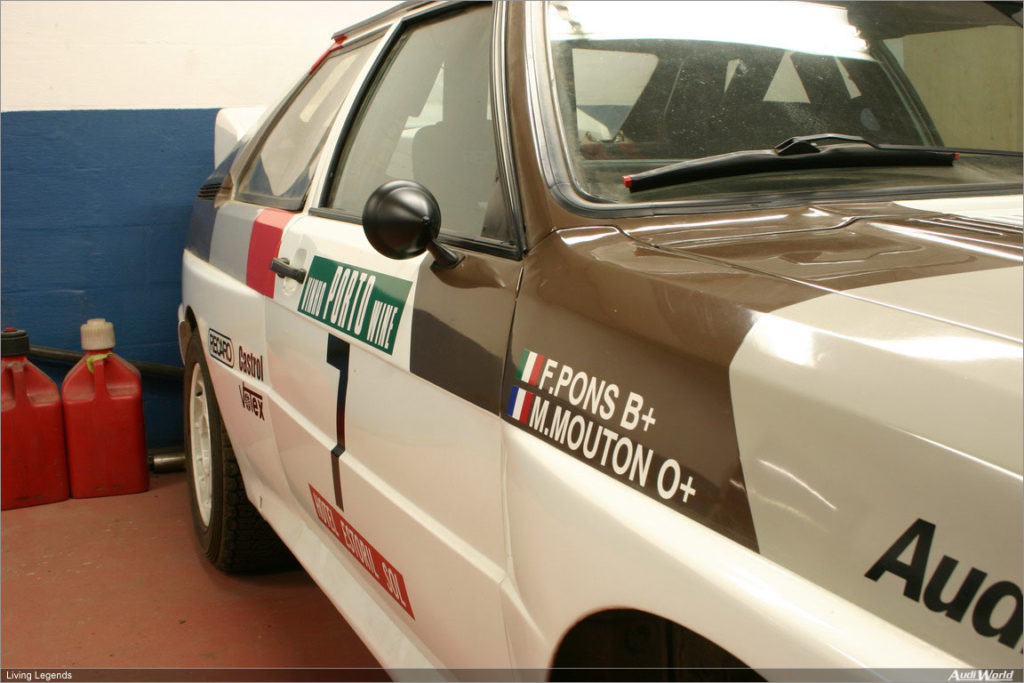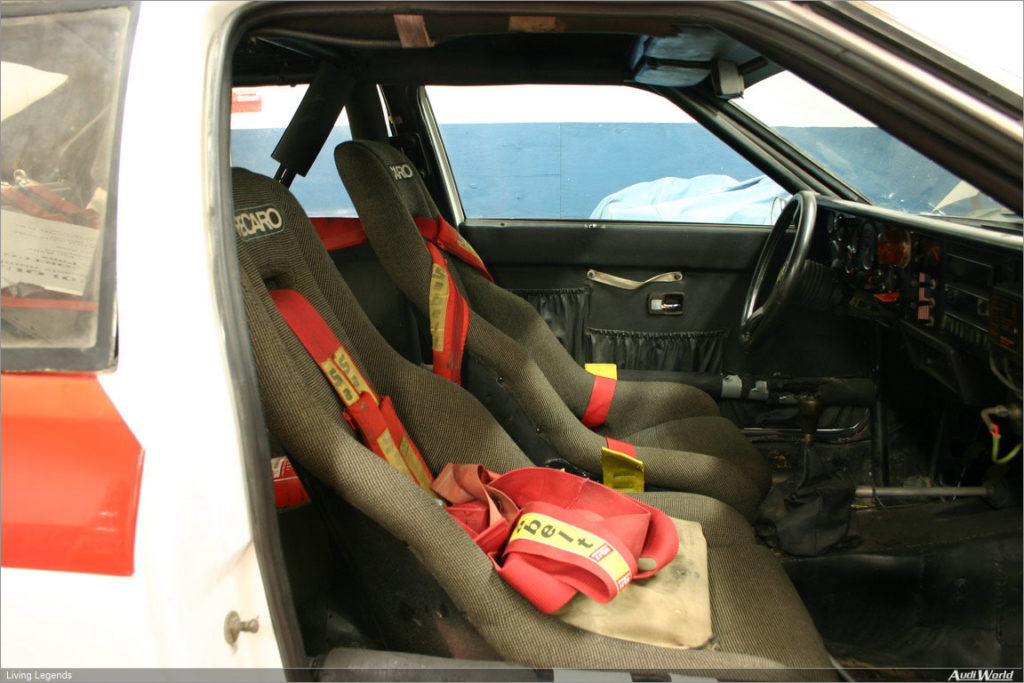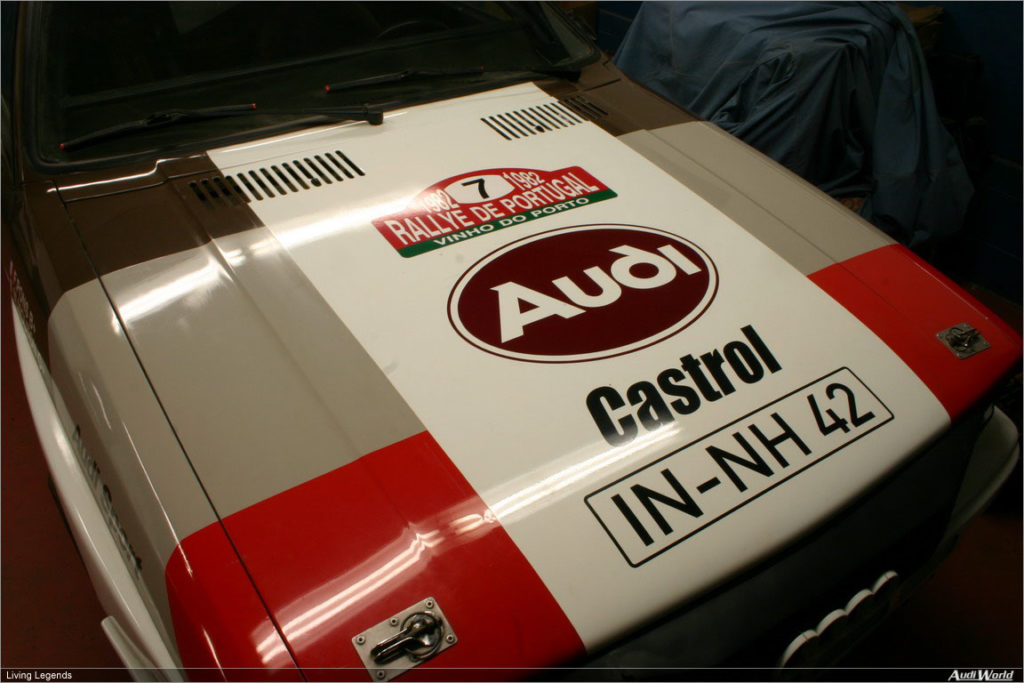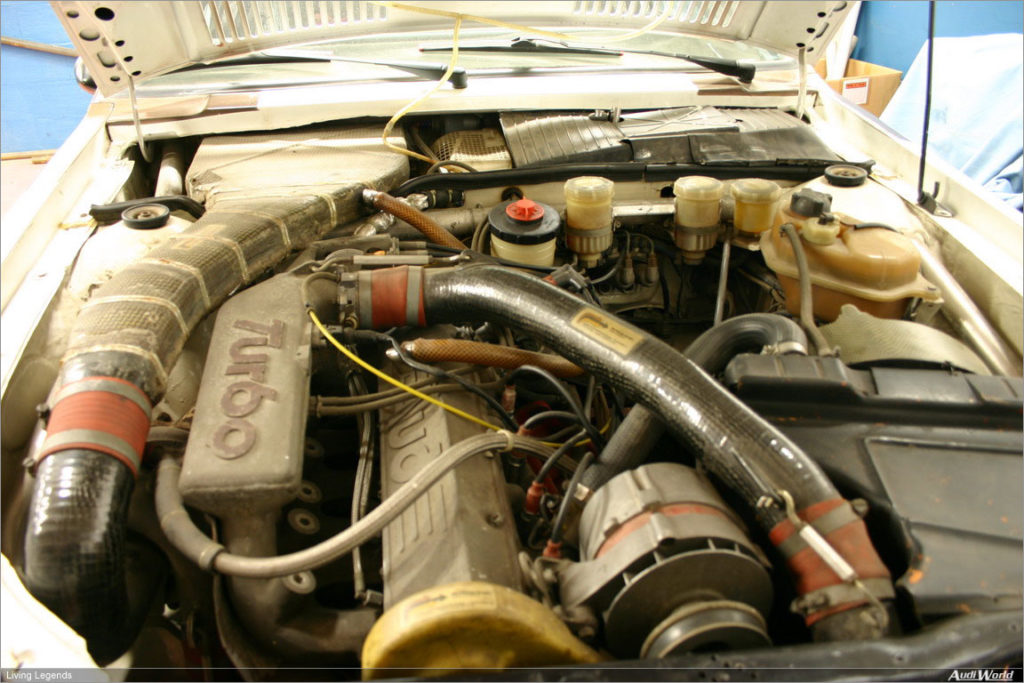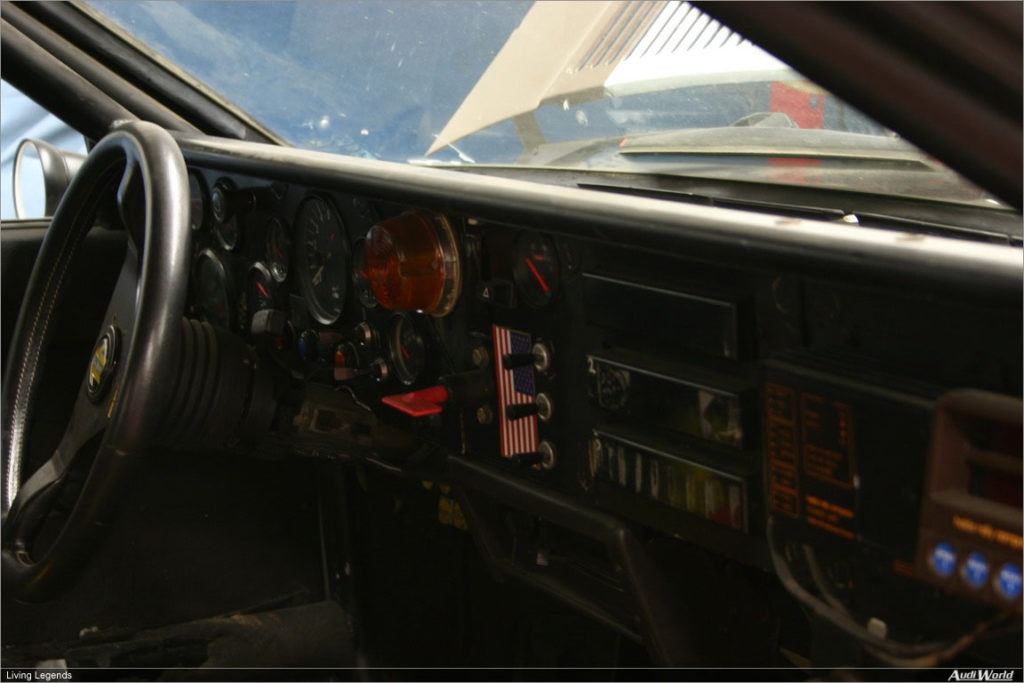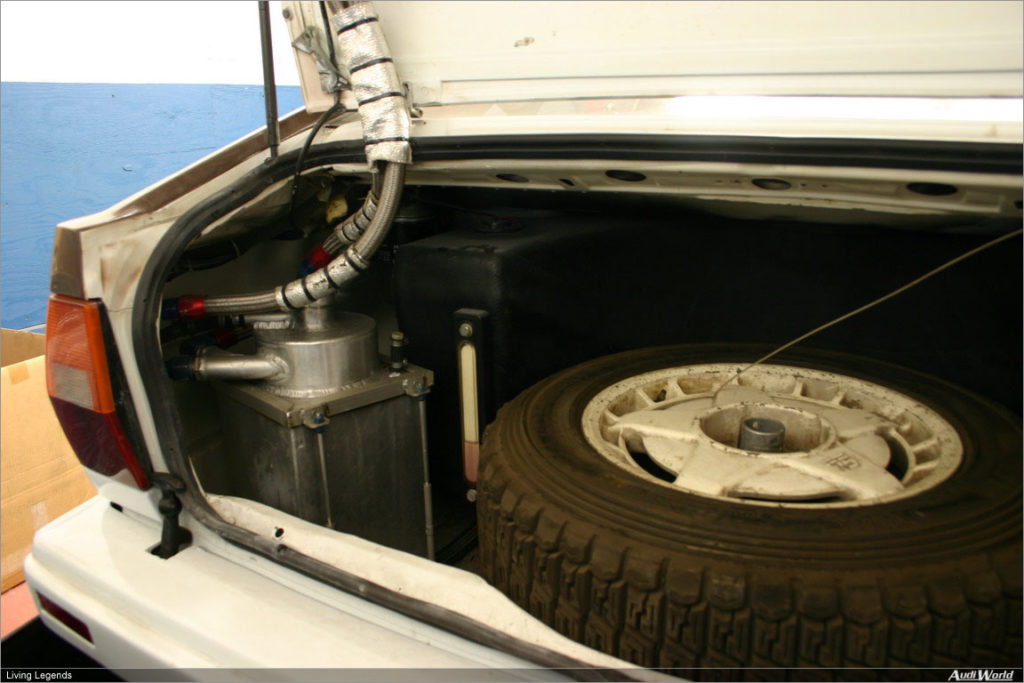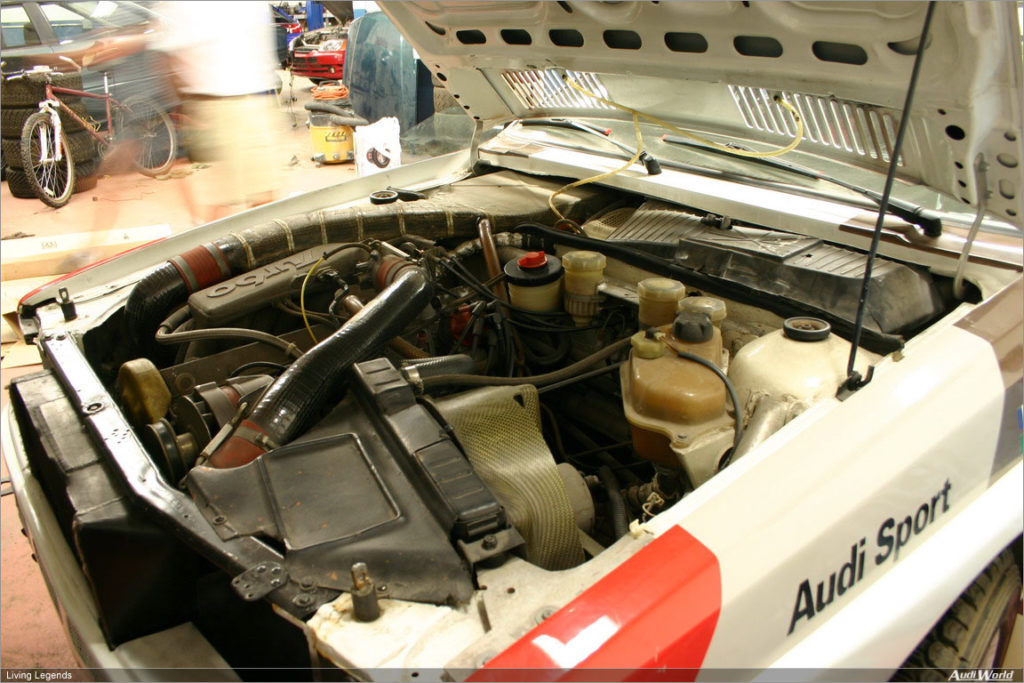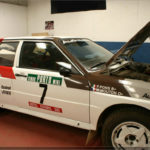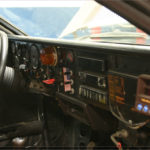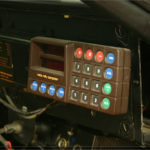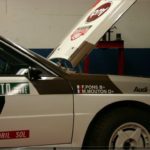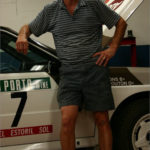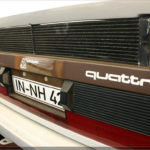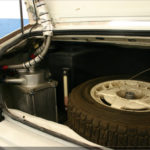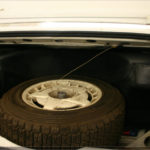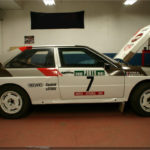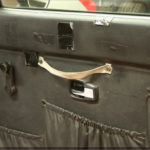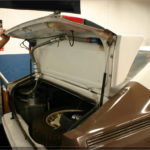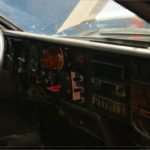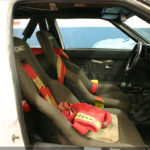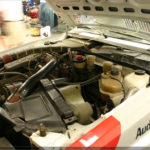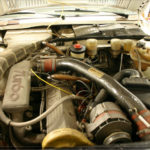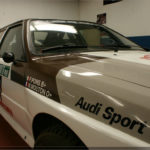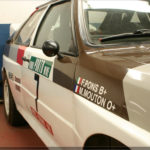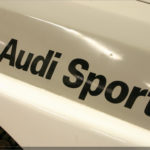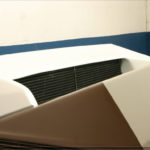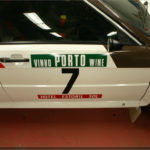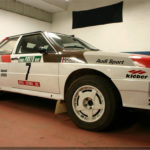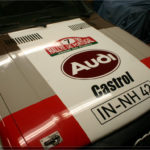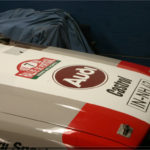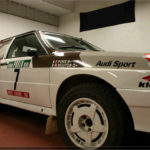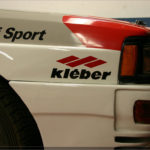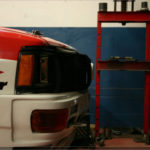John Buffum – Audi Rally Racing’s Living Legend
Editors note – we first ran this story in 2006, but felt it was time to bump it up to the top to get some new eyes on it. A lot has changed since it ran, namely an Audi in World Rallycross, but the rest holds true.
Audi. quattro. Those 2 names, when combined, helped re-define performance rally racing around the world.
Prior to the Audi Quattro, all wheel drive was firmly planted in the truck and Jeep world, and certainly not something one might find in a high performance car. Audi was the first manufacturer to successfully introduce all wheel drive to street and racing cars in great numbers. Earlier rally cars suffered from mild to serious traction problems. The Quattro cars, however, had no such difficulties with traction; there was essentially no limit to how much power they could transmit to the ground.
In this day of Audi winning Le Mans with diesel racing cars and DTM races with swoopy-fendered cars looking like a caricature of the real car, we sometimes overlook the roots of our beloved marquee’s racing history.
For those less familiar, first a quick primer on rallying. This form of racing puts driver and co-driver on closed public roads (paved, unpaved, snowy, muddy, wet, dry, forested, desert-like and everywhere in between) in a race against the clock. In European sanctioned events the crew is provided an opportunity to pre-run the exact course (and to create route notes) so that they will know exactly where to go, the types of terrain they will encounter and what to expect come race time. In American sanctioned events a run-through is traditionally NOT allowed, and the route notes are instead provided by the organizer.
Route notes are critical since they are used by the co-driver to keep the car on course. The actual competition is held on ‘special stages’ which are the closed off roads, but the cars must be able to travel from stage to stage over public roads (i.e. they must be road legal) under their own power.
The Audi Quattro was as dominant in rally racing as any race car has been in any form of racing. In the first years the Quattro was involved it won almost every rally it entered. In fact, it won so many events so handily that teams and drivers were concerned that the sanctioning bodies would outlaw all wheel drive in rallying just as they had done in other forms of racing. It was common for some drivers to sandbag during the events, which is to say they would intentionally slow up on course so they would not win in such a commanding way as to draw negative attention to their superior cars.
As amazing as the Audi Quattro rally racing cars were, the best racing car in the world still needs a top driver at the wheel. Enter John Buffum, widely regarded as the most successful rally driver in the USA.
By the time Buffum started driving the Audi factory backed A1 Quattro, he had already become one of the sport’s best drivers. In 1964, while attending Middlebury College in Vermont, one of John’s fraternity brothers talked him into the navigator seat in a time speed distance (TSD) rally which was run in a borrowed MGA. So began the most famous rally career in U.S. motorsports history.
Buffum began driving TSD rallies with his new wife Vicki in 1966, and later on with others throughout the rest of his stay at Middlebury. After graduating college, he enlisted in the Army, and shipped out to Germany for a stint with the Army Corps of Engineers. Given his blossoming interest in rally racing, this turned out to be a perfect location to be stationed. It was in Germany that Buffum saw all-out World Rallying for the first time. He purchased a Porsche 911T to compete in both regional and international rallies. In 1969, he drove to a 12th place finish at Monte Carlo, sharing the driving chores with American roadracer Steve “Yogi” Behr.
When Buffum’s stay in Germany came to an end in 1970 he returned to the USA, but at that time PRO rally racing did not exist in the States. Because he could not get the speed he wanted in TSD events, Buffum tried his hand at IMSA and SCCA roadracing instead. He then went on to form his own racing company – Libra Racing – and competed both in a Mini Cooper and an English Ford Escort. Buffum shared the driving duties with the likes of George Follmer, Steve Behr and Brett Lunger, and had some top 10 finishes in a BMW CSL. Unfortunately he didn’t have the right budget (or the right car, which would have been a Porsche Carrera RSR at that time) to break into the winner’s circle.
By the mid-70’s performance rallying was gaining popularity in the U.S. Even though John and Vicki had divorced in 1974, they continued to run rallies together at that time. 1976 would prove to be a breakthrough year when the duo won two American rallies and one Canadian event. They won the NARRA national championship, and were narrowly defeated by Hendrik Blok/Erick Haugefor the SCCA championship.
It was during this time period also that Buffum’s driving style started to mature. He began to evolve from reckless mode (which had to that point earned him the nickname “Stuff’em Buffum”) to a championship, winning style. Buffum became known for his ability to handle the highly variable conditions of a rally course, his photographic memory of roads and turns and most importantly for his ability to drive fast enough to set the fastest time, but with enough sense to keep the car on its wheels long enough to finish the event.
Starting in 1977, Buffum drove factory prepared Triumph TR-7s and TR-8s with Doug Shepherd as his co-driver. Together the pair dominated both the SCCA PRO Rally series and the North America Rally Championship until parent company British Leyland dropped out of racing in the U.S. In 1981, they tried running Audi 80 and Peugeot 504 racers, but could not keep up with Rod Millen’s factory Mazda RX-7 rally entries.
This all changed in 1982, when Audi supplied Buffum and Shepherd with its new Audi Quattro. Paired with this amazing car, the two became nearly invincible. Millen would go on to get a faster RX-7 which Buffum first countered with a Quattro A2 and then a Sport Quattro S1 to up the ante again. Buffum also ran the occasional rally in Europe where, in 1983, he became the first and only American to win a European Championship event (1983 Sachs Rally in Germany and the 1984 ERC event in Cyprus).
Doug Shepherd eventually moved into a factory driver’s role with Dodge, and Buffum hired veteran co-driver Tom Grimshaw. Buffum and Grimshaw won back-to-back-to-back championships, including their undefeated 1987 season. It was during this time that Buffum became the winningest performance rallying driver ever, worldwide. He tallied 104 national championship wins, far surpassing any other rally driver. He retired after that year and became the SCCA PRO Rally series manager, helping the sport maintain its stature through some lean years.
Unsurprisingly, Buffum still drives an occasional rally. He won several Canadian events, and while filling in for stepson Paul Choiniere he won the Wild West PRO Rally in Olympia, WA in 1993! He also subbed and won for Choiniere at the ’94 Lake Superior PRO Rally. In September of 1995, Buffum and veteran co-driver Mark Williams shaved more than two hours off the record time in winning the Rally of Incas in Peru in Choiniere’s old Audi S2.
John is still involved with rallying, both with Paul Choiniere and the Hyundai car, and with Vermont Sports car. He’s currently in California with Paul and the crew from VSC, gearing up for the rally events in this year’s X Games.
Career Highlights:
- ProRally – Driver -SCCA ProRally Grand Master
- 11 National ProRally Championship Titles
- 117 ProRally victories, the most by any ProRally driver
- 1976 -NARRA National Championship
- Second place overall in SCCA Championship
- 1977-1980 -SCCA ProRally Series Champion
- North America Rally Champion
- 1982 -SCCA ProRally Series Champion
- 1983 -Won European Championship event (Sachs Rally)
- 1984 -Won European Championship event (in Cyprus)
- 1986-1987 -SCCA ProRally Series Champion
- –Undefeated in 1987 season–
- 1988 -Retired from driving
- 1993-1999 -Occasional driving roles includes numerous wins:
- 1993 -Wild West PRO Rally in Olympia, Wash.
- 1994 -Lake Superior ProRally
- 1995 -Rally of Incas (Peru), shattering race record by more than two hours
- 1998 -Ojibwe Forests PRO Rally
- 1999 -Lake Superior PRO Rally
Buffum has managed to purchase back his first A1 rally car, which is the one featured in this article. The car as it stands today is an Audi Sport prepped car which was used one time by Michelle Mouton in the Portuguese Rally. Mouton actually drove the car to victory in that event with co-driver Fabrizia Pons. After the event, Buffum’s crew from Libra Racing went to Germany to retrieve the car which had some body damage – not from a crash – but from the crew jumping on the roof and hood celebrating the victory! It was recently repainted to the match – right down to the last details – its appearance in Portugal.
Powered by a 2144cc turbocharged and intercooled 5 cylinder with 2 valves per cylinder, and breathing through a small inlet restrictor these cars produced somewhere around 300 hp all with CONSIDERABLE lag. Buffum commented that “you’d floor it, whip out a deck of cards and wait for the boost to hit.” While quite a contrast from today’s small turbo cars, these rally cars were nonetheless blindingly fast when on boost.
The car is a combination of tough as nails off-road construction and sophisticated racing technology. The unit body is fully seam welded (street car unit bodies are spot welded, crimped, and glued, but not seam welded which is hugely labor intensive, but makes the unit VERY strong). HUGE aluminum skid plates protect the vital underside bits. There is generous ground clearance, a very sophisticated suspension and a reinforced passenger compartment which, interestingly, would not be legal in today’s competition since it is made from aluminum and is bolted rather than welded to the car.
In traditional rally car fashion, there are relays, fuses, gauges, map pockets, etc in the interior. We can say with first hand knowledge that the seats are in fact very comfortable! There is no hydraulic hand brake like the newer cars have for quick J turns, but there is a manual front/rear proportioning valve for the brakes.
The car makes use of a fair bit of composite materials. The fuel cell, air cleaner, and some hard boost pipes, among other bits, are made from carbon fiber. Even the cam belt cover and radiator fan shroud are composite!
Readers will also notice that the boost hoses are connected with silicone sleeves, which are augmented by metal hooks. These engines were equipped with no bypass or blow off valve of any kind to feed the charge air around the throttle. When the driver lifted off of the throttle all of the pressurized air would slam into the closed throttle plate, and then pulse back towards the turbocharger building up incredible pressure inside the lines after the cold side of the turbo. The result was oftentimes broken turbochargers and boost hoses coming apart.
Audi also made use of dry sump oiling and a remote reservoir in the trunk (along with a gargantuan radiator style oil cooler mounted atop the trunk lid under the wing). This is somewhat typical of the time, as oiling technology had not yet caught up with the incredible pressures and heat these turbo engines were capable of producing.
Anybody who can recall Audi’s rally racing glory days (or those who have come to appreciate the achievements via videos, pictures and stories) always wonder whether Audi would ever return to rally racing. According to Buffum it is highly unlikely. He considers today’s factory cars to be too big, too nice and ultimately too fragile. Back when quattro first came out it was purpose built for racing with use in street cars being a secondary goal. Audi was not really a luxury or sports car builder in those days; the cars were tough and relatively simple. The same certainly can not be said for today’s Audis.
It’s lucky for us then, that there are folks like John Buffum who keep the history of Audi and rally racing alive, and keep alive these amazing machines of the recent past.
Meeting Buffum was a very special thing for me given given my life long passion for Audi and for rally racing. Growing up, I knew who Buffum was and I followed his career as feasible in those dark days before internet and satellite TV. It was remarkable to chat with him about “the old days” a little, though I was trying hard not to annoy him with every silly question. Buffum was very gracious and humble, chatting about other drivers he rallied against, the Pikes Peak events, European rallies, and the American championships as if they were just casual drives. You’d never know in a quick chat just what he had accomplished during his storied racing career.
We’d like to extend very special thanks to John Buffum for taking the time to talk and show us his car .

